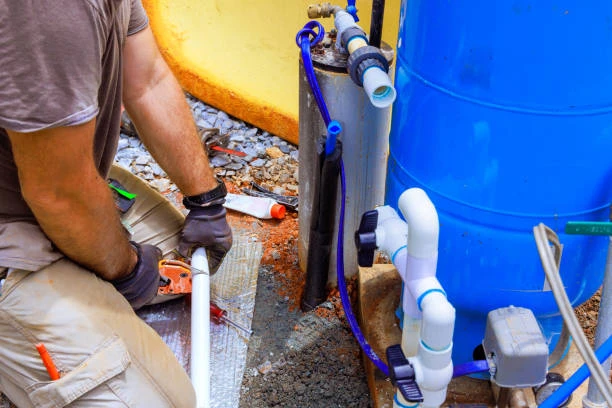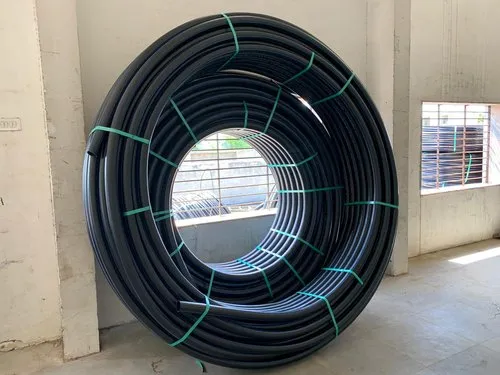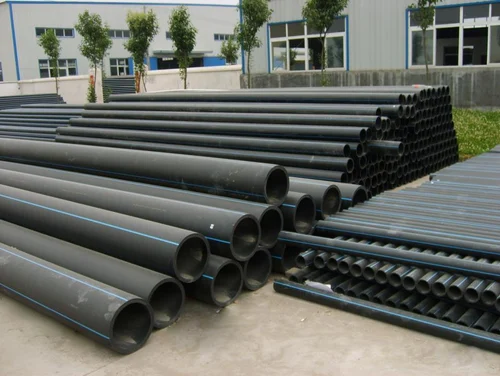Water Pipe In an era where high-speed internet access is essential for economic development, education, and communication, remote and rural areas often face significant challenges in connecting to reliable broadband services. In the Orkney Islands, a group of islands off the northeast coast of Scotland, the local government and telecommunications providers have found an innovative solution to the region’s broadband connectivity problems. Instead of using traditional methods to lay fibre optic cables, the Orkney broadband rollout project took an unconventional route: running fibre cables through existing water pipes.
This unique approach has garner attention not only for its practicality but also for its potential to revolutionize how broadband infrastructure can be rolled out in other remote communities. In this article, we will explore the Orkney broadband rollout project, the technical process of running fibre cables via water pipes, and how this innovative strategy is shaping the future of rural broadband connectivity. We will also discuss the benefits, challenges, and broader implications of this solution for other rural and underserved areas.

The Orkney Broadband Project: Bridging the Digital Divide
Orkney is an archipelago make up of more than 70 islands, located off the northeastern coast of mainland Scotland. While its breathtaking landscapes and rich cultural history make it a popular tourist destination, the geography and dispersed nature of the islands also present significant challenges for infrastructure development. Broadband access, in particular, has been a long-standing issue for the region, with many areas suffering from slow speeds or no access to broadband services at all.
For years, the residents of Orkney struggled with outdated internet infrastructure, relying on satellite connections or expensive mobile data plans to access the web. As a result, access to essential services like e-commerce, telehealth, remote working, and online education was limite, hindering the region’s economic growth and quality of life.
The Orkney Broadband Project was launch to address these challenges and improve connectivity across the islands. A collaboration between the Orkney Islands Council, local businesses, and telecommunications providers, the project’s goal is to deliver fast, reliable broadband services to the islands, ensuring that no one is left behind in the digital age.
One of the most striking elements of this project is the decision to run fibre optic cables through the region’s water pipes. By utilizing the existing water pipe infrastructure, the project aims to overcome the high cost and logistical difficulties associated with digging up roads or laying new cables across the islands’ rugged terrain.
How Fibre Cables Are Being Run Through Water Pipes
The decision to run fibre optic cables through water pipes was not take lightly. It required a great deal of planning, engineering expertise, and cooperation between multiple stakeholders. Below, we’ll take a closer look at how this innovative approach works.
1. The Role of Water Pipes in the Broadband Rollout
Water pipes are a ubiquitous feature of most towns and cities, and Orkney is no exception. The existing water infrastructure, which includes a network of pipes that transport water to homes and businesses across the islands, is already in place, making it an ideal candidate for fibre optic cable installation.
By using the water pipes as a conduit for fibre cables, the project can bypass the cost and difficulty of digging up roads or laying new cables in difficult-to-reach areas. The fibre optic cables are inserte into the water pipes through a process calle “pipe-in-pipe” installation. The fibre optic cables are inserte into protective tubing, which is then place inside the water pipes. This method protects the cables from external damage and prevents interference from the elements, such as moisture or soil pressure.
2. The Technical Process of Pipe-in-Pipe Installation
The pipe-in-pipe method is a common approach use in infrastructure projects where it’s difficult or expensive to lay cables through traditional means. The process begins by inserting a flexible conduit into the water pipes. This conduit acts as a protective layer, shielding the fibre optic cables from any potential hazards that could damage them, such as sharp edges, rust, or water pressure.
Once the conduit is in place, the fibre optic cables are pull through using special equipment designed for the task. The installation process typically involves using air or mechanical pulling methods to move the cables through the conduit. The cables are carefully positione along the length of the water pipes, ensuring that they are securely house and free from tension that could cause damage in the future.
Once the fibre cables have been installe, they are connecte to the broadband network at both ends of the water pipe route. The final step involves testing the system to ensure that the signal strength and data transmission are optimal. If the installation is successful, residents in the surrounding areas can enjoy high-speed broadband services through the same water pipes that supply their homes with fresh water.
3. Advantages of Using Water Pipe for Fibre Cable Installation
There are several advantages to using water pipes as a conduit for fibre optic cables, particularly in remote or difficult-to-reach areas like Orkney. Some of the key benefits include:
1. Cost-Effectiveness
Laying fibre optic cables through water pipes eliminates the need for extensive digging, roadworks, and the associated costs. This makes the installation process significantly more affordable, especially in regions with challenging terrain or low population density.
2. Reduced Environmental Impact
The “pipe-in-pipe” method minimizes the disruption to the local environment. Since no large-scale excavation is require, there is less risk of damaging the natural landscape, disrupting wildlife habitats, or disturbing local communities.
3. Faster Deployment
With existing water pipes already in place, the time required to install broadband infrastructure is reduce. This allows the Orkney Islands to access high-speed broadband services much more quickly than if new trenches were being dug or other traditional methods were employe.
4. Increased Protection for the Cables
The fibre optic cables are protecte by the water pipes themselves, reducing the risk of damage from external factors like soil pressure, physical impact, or environmental wear. The water pipes act as a shield, ensuring that the broadband infrastructure remains intact for many years.
5. Future-Proofing
The pipe-in-pipe method allows for the easy addition of more cables or upgrades in the future. As demand for faster internet speeds and more data increases, new fibre cables can be installe in the same water pipes without needing to dig up roads or disrupt communities.
The Impact of the Orkney Broadband Rollout
The Orkney Broadband Project is not only about improving internet speeds but also about enhancing the quality of life for residents and businesses in the region. High-speed internet can open up new opportunities for economic development, education, healthcare, and communication.
1. Boosting the Local Economy
Reliable broadband is a key driver of economic growth, especially for rural areas. With better access to high-speed internet, businesses in Orkney can expand their digital presence, attract customers from around the world, and streamline operations. E-commerce, remote working, and digital entrepreneurship can all thrive with improved connectivity.
2. Improving Healthcare Access
Telemedicine and online healthcare services have become increasingly important in rural areas, where access to healthcare facilities may be limite. With fast, reliable internet, residents of Orkney can access remote medical consultations, online prescriptions, and health information, improving overall healthcare accessibility.
3. Enhancing Education
Students and educators in rural communities often face significant barriers to accessing quality online learning resources. Fast internet speeds will help bridge this gap, allowing students in Orkney to participate in online courses, access educational materials, and engage in virtual learning experiences.
4. Encouraging Remote Work
Remote working has become more common in recent years, and fast internet is essential for this shift. With improved broadband, residents of Orkney can work from home, offering them more flexibility and reducing the need to commute. This can also attract new talent to the area, as people are more likely to live in remote areas if they can work online.
Challenges and Water pipe Considerations
While the pipe-in-pipe approach offers many advantages, it also presents several challenges. These include:
1. Water pipe Regulatory and Safety Concerns
Water pipes are a critical part of the region’s infrastructure, and there are concerns about the potential impact of installing fibre cables inside them. Regulatory approvals must be obtaine, and the installation process must ensure that the water supply is not contaminate or compromised in any way.
2. Water pipe Maintenance and Repairs
Fibre optic cables installed within water pipes require ongoing maintenance to ensure optimal performance. If a cable is damage. It may be difficult to access for repairs without disrupting the water supply or causing delays.
3. Water pipe Infrastructure Limitations
The water pipes in Orkney were not originally designe to carry fibre cables, and not all sections may be suitable for this type of installation. The project must carefully assess the condition of the pipes to ensure they can safely accommodate the cables.
Conclusion
The Orkney broadband rollout project’s innovative use of water pipes to run fibre optic cables is a game-changing solution for remote and rural areas struggling with connectivity issues. By using existing infrastructure, the project has significantly reduced costs, minimized environmental impact. And accelerated the deployment of high-speed broadband services. As more rural areas face similar challenges.Orkney’s success could provide a blueprint for future broadband rollouts in other remote communities.
Frequently Asked Questions (FAQs)
1. Why did the Orkney Broadband Project choose to run fibre cables through water pipes?
The use of water pipes allowed the project to save on the high costs and logistical challenges associated with traditional broadband infrastructure methods. Such as digging up roads. It also made use of existing infrastructure, speeding up deployment.
2. How does the “pipe-in-pipe” installation method work?
The fibre optic cables are place inside a protective conduit,


















